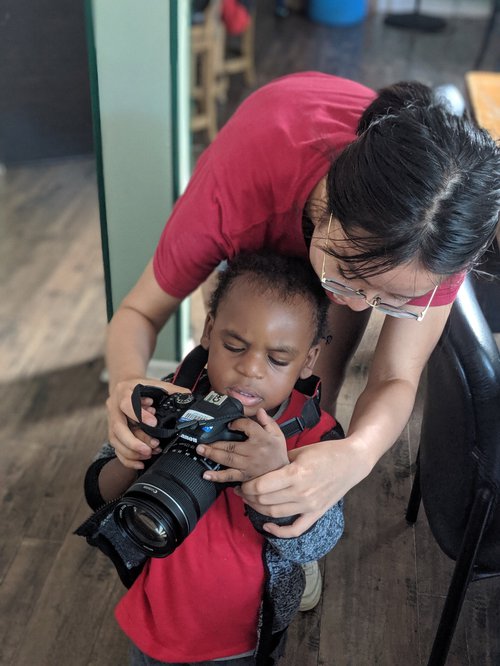Beyond Your Feed: Anti-Racism Practices for Brand Builders

This week's guest blog comes to us from Audrey Teo, Storytelling and Marketing Coordinator from I Grow Chicago.
Over the past weeks, brands and companies have flocked to craft and put out messages of solidarity and allyship; many recognizing that they need to “do better.” Corporations, influencers, individuals, many who have been apolitical and silent before spoke up this time. As the weeks go by, however, we see feeds and content returning to their “regularly scheduled programming.”
Let us be clear, there is no going back to normal. Not when normal is a jarring disconnect between a progressive outward brand identity and toxic internal practices, not when brands who tout inclusivity and diversity do so by tokenizing BIPOC. In recent years, there have been an outpouring of statements from minority workers in seemingly progressive spaces exposing the racist and misogynistic hierarchical structures that plague the workplace.
So, what does genuine allyship look like?
It means doing this work daily, committing and re-committing every single day to learn and unlearn everything that is entrenched in the workplace and mainstream media. Entrepreneurs, influencers, businesses must go beyond performative social media or optical allyship. Here are some tangible steps you can take to dismantle racism in your brand:
1
Going beyond tokenized diversity: Assess your hiring practices and leadership. Look around and critically examine your workplace. Consider:
Look at the content you are producing and the brand you have created. Do they feature only white or white-passing people? And if you are featuring Black models and images, are you paying them or profiting off of them? Does your content align with the creators? Too often Black stories are told through a White lens.
2
Be clear in your content: In terms of messaging, silence is violence. But you also need to go beyond a blanket statement of “we need to do better.” Instead of a general, ambiguous message, be unambiguous on what the problem is: racism. If you are worried about alienating certain demographics of people with your messaging, lean into this worry and be critical: your budget and your clientele reflects your values. Wading into this might feel “risky” or you might be afraid of being divisive and alienating your audience, but ask yourself what do you value more?
3
Avoid appropriation or movement co-opting: You must uplift communities of color and especially Black voices and Black bodies and work actively against the status quo which consistently dehumanizes and undervalues Black creation. It is known that brands have profited off of Black art without giving due credit. Pay Black and Brown content creators. Uplift their voices and put your money where your mouth is through fair wages and setting up regular donations to grassroots work.
4
Add complexity to your messaging: Also recognize that the Black community is not a monolith: when engaging with content from Black people, are you honoring the entire continuum of Black and Brown skin tones? Across gender, sexual orientation, and class? Are you celebrating all Black folks or are you picking and choosing individuals who only align with narrow Eurocentric beauty standards?
5
Share money, not just stories: Donate your money to local nonprofits. Be willing to pay more money for local and ethical sourcing of products. When working with agencies, before entering into partnership, do your research; many offer less to Black creators for campaigns. Hire more Black people in leadership roles, cultivating and promoting Black talent, and pay them well. Your money can be a powerful tool for justice or a dangerous weapon of oppression.
6
Share your skills: Lack of access is one of the greatest challenges to upward mobility. You do not need to look far to be aware of the achievement gap that exists across all industries, from education to the workplace. If you are someone who has social and cultural capital, offer your advice and skills for free. Offer to review someone’s resumes and applications, facilitate introductions: these small connections can go a long way in helping to close the achievement gap in the long run.
Social media is comfortable and convenient, but it has also proved to be an immensely powerful tool to mobilize. Influencers and brands have an increasingly growing sway, in this digital age, in social expectations and what we value. As a brand, as a content creator, as an individual, you have the responsibility to use whatever voice you have to amplify that Black Lives Matter. Not just today, not just for this week or this year, but everyday. If you have stayed silent, ignoring a blatant social justice issue that has the country and the entire world has been laser focused on, ask yourself why that is, reflect, then speak up.

About Audrey Teo:
Audrey serves as the Storytelling and Marketing Coordinator at I Grow Chicago. The mission of I Grow Chicago is to grow Englewood from surviving to thriving through community connection, skill building, and opportunity. Working as a photographer and videographer, Audrey is committed to uplifting voices and building collective power through storytelling practices centered around care and community. You can learn more about her work by visiting www.igrowchicago.org or following @igrowchicago on Facebook and Instagram.


